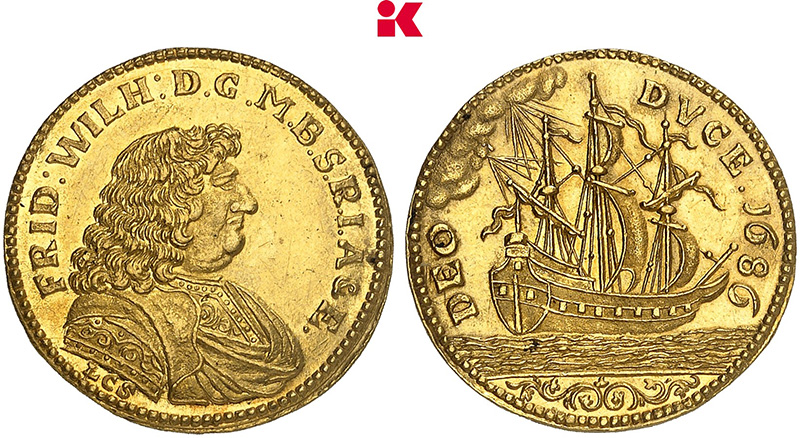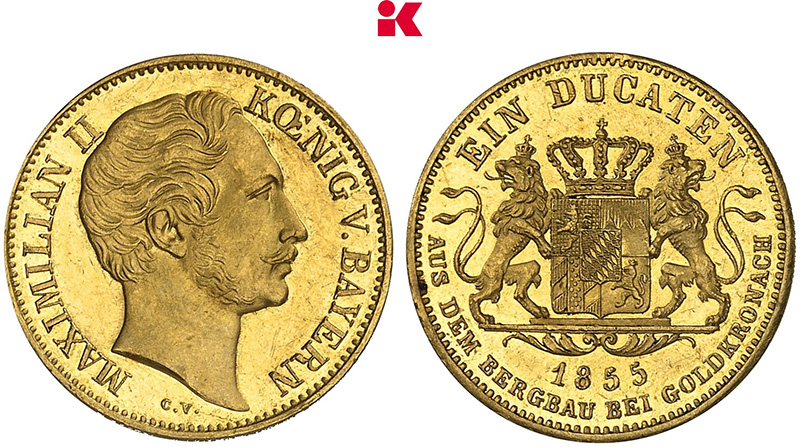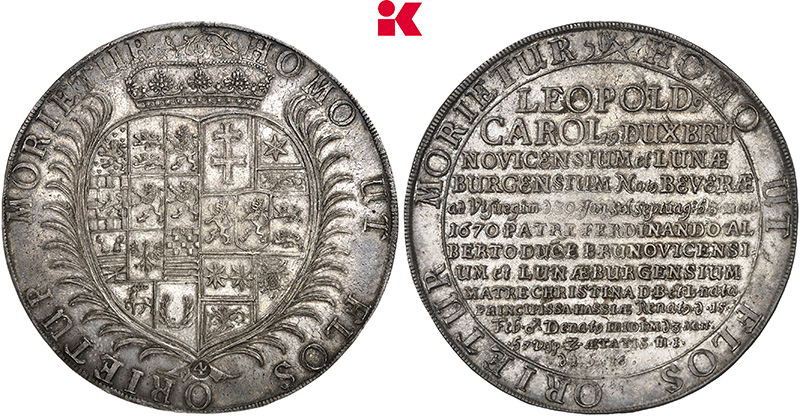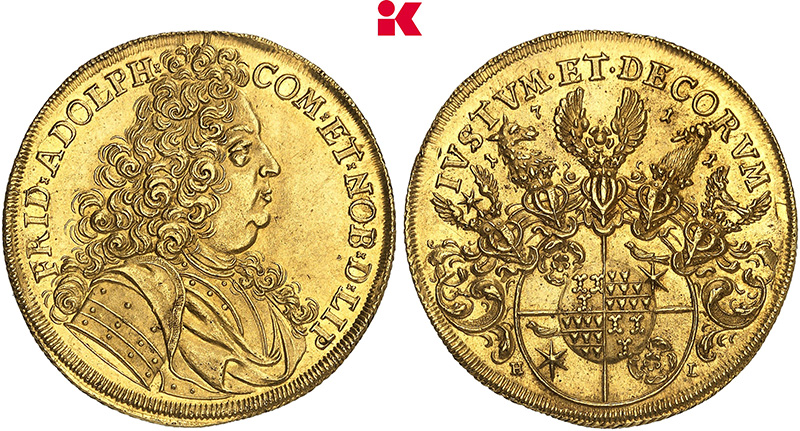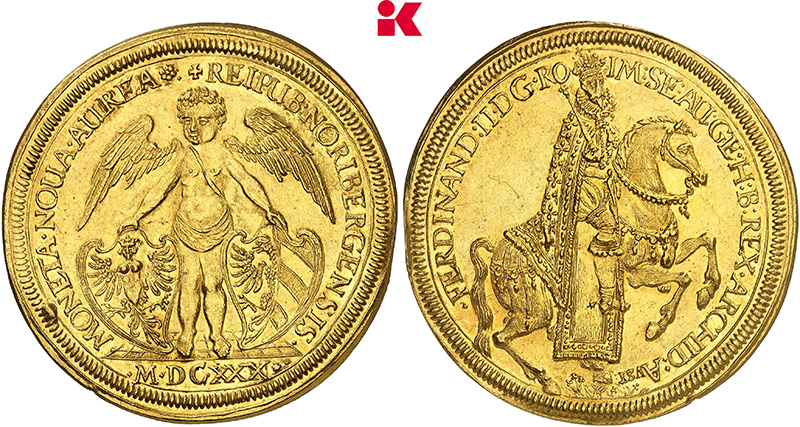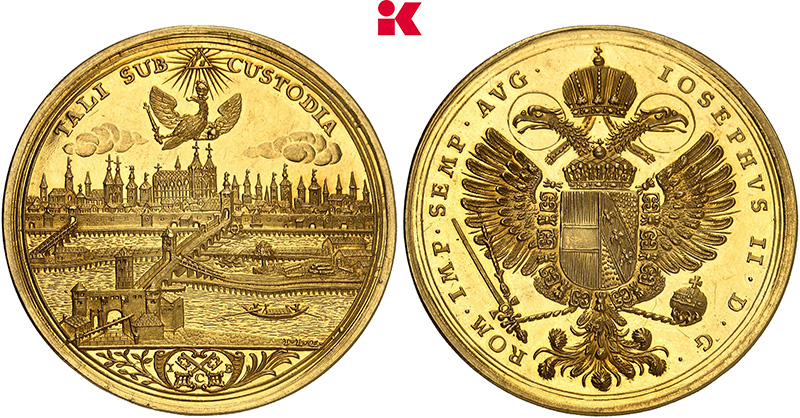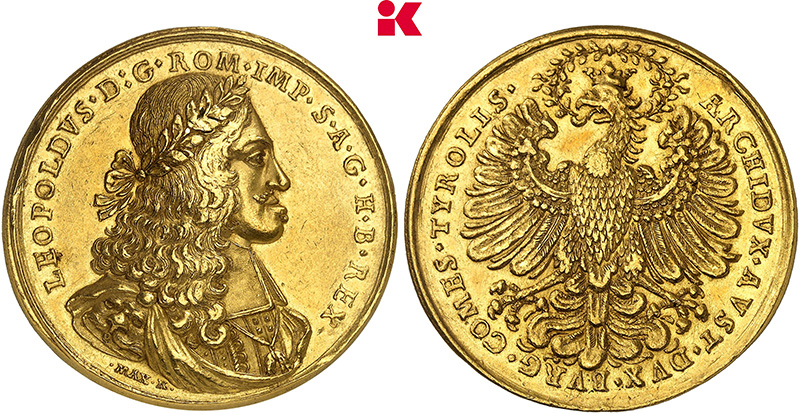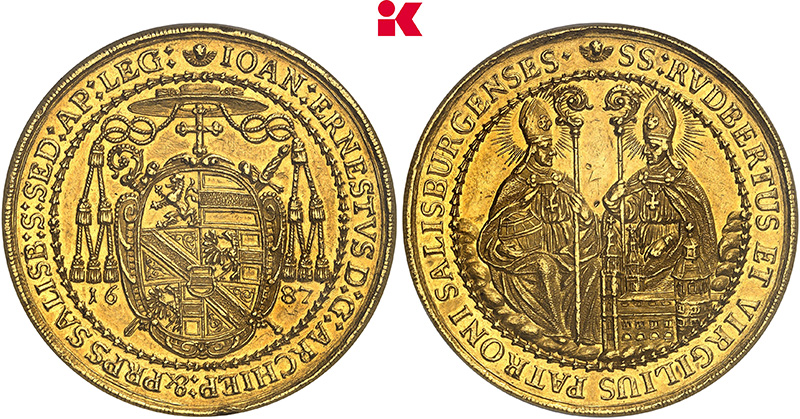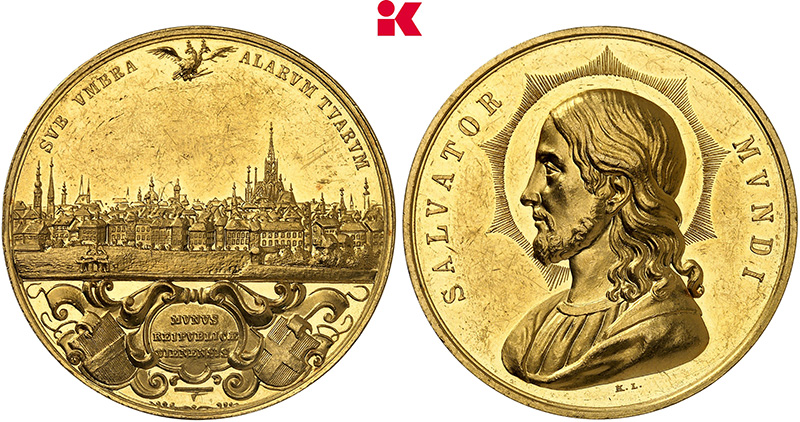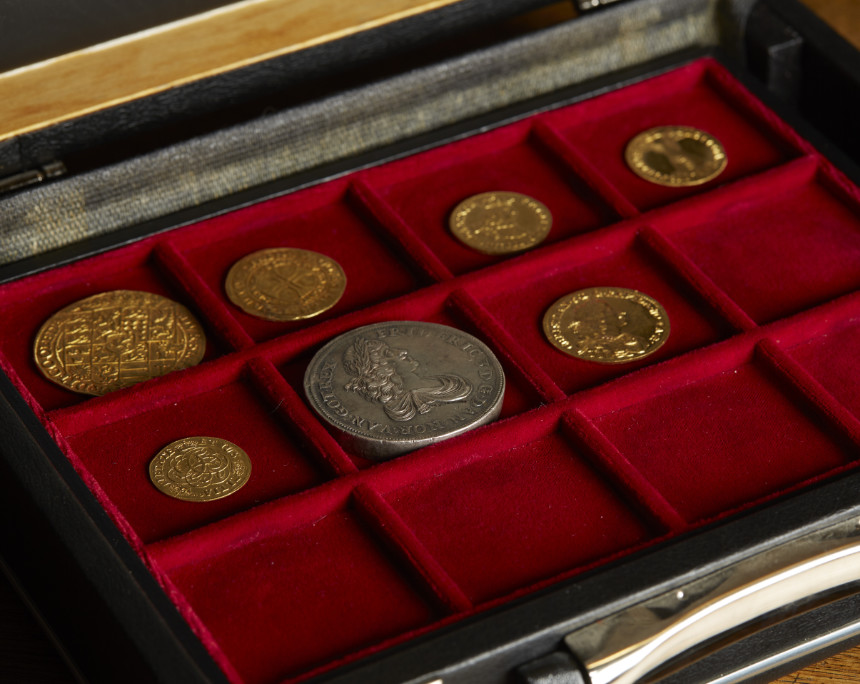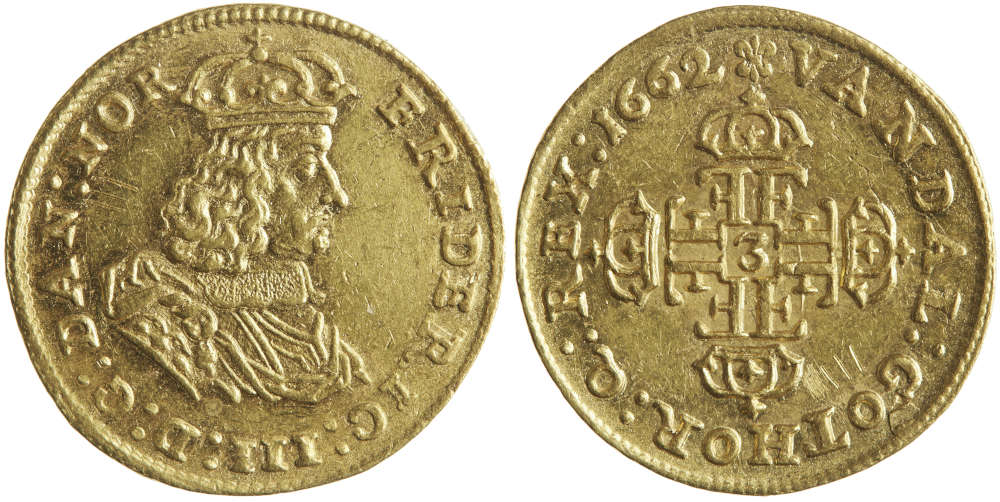National Museum of Denmark Acquires Seven Coins of the Bruun Collection
After being safeguarded for a century, the highly important Bruun Collection is scheduled to be sold in a series of auctions by Stack’s Bowers Galleries commencing in autumn 2024 (click here to read the report on the sale). Now the National Museum of Denmark has used its right of first refusal to buy seven unique coins from the coin collection of the butter merchant Lars Emil Bruun before the pieces come under the hammer.
Content
The acquisition was made possible by the support association Selskabet Den kgl. Mønt- og Medaillesamlings Venner, which was founded in 1945 for this very purpose: the association is supposed to step in when the Bruun Collection is sold at auction exactly 100 years after the collector’s death. The association has now donated DKK 7.7 million to the National Museum, the equivalent of about EUR 1 million.

Triple ducat, minted in Christiania (Norway) in 1671 under the rule of Christian V. Photo: National Museum of Denmark.
The Seven Coins
The museum purchased six gold coins and one silver coin, all of which were minted in the 16th and 17th centuries in Denmark-Norway, the real union existing at the time. Two of the coins were minted in Christiania, today’s Oslo.
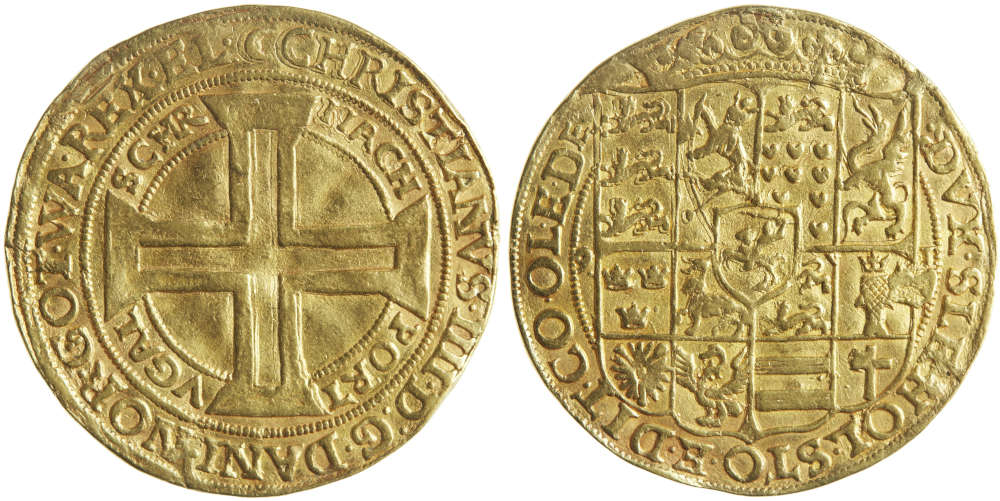
Half portugaleser, minted in Haderslev in 1591 for Christian IV under the guardianship of his mother Sophie of Mecklenburg. Traces of mounting. Photo: National Museum of Denmark.
Two of the gold coins were struck in Haderslev for Christian IV. The ruler was still a minor at the time, so the coins were commissioned by his mother, Sophie of Mecklenburg. They were probably used as representative coins to convey a political message. In any case, the coin motifs provoked a conflict between the Danish Council of the Realm and the Queen Dowager, who shared guardianship of the king. Both coins have traces of mounting, which indicates that they were worn on chains around the neck.
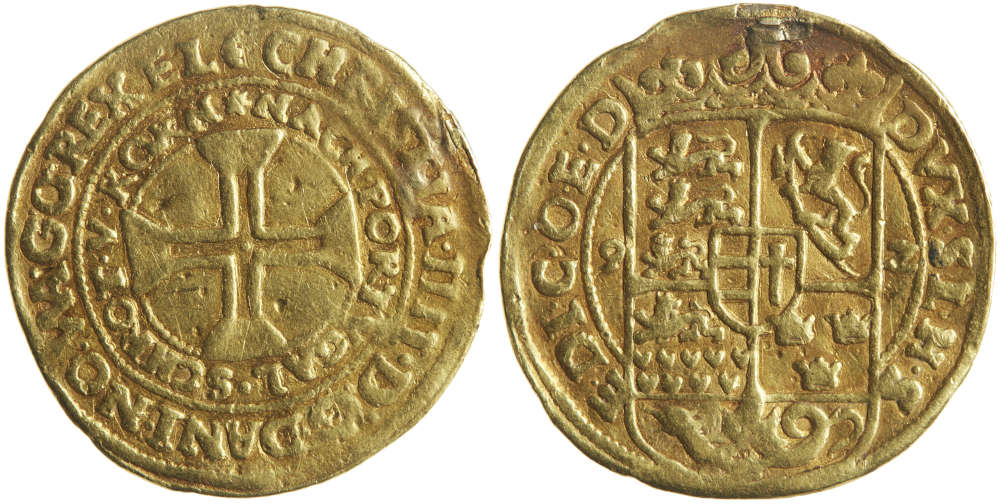
Quarter portugaleser, minted in Haderslev in 1592 for Christian IV under the guardianship of his mother Sophie of Mecklenburg. Traces of mounting. Photo: National Museum of Denmark.
“All the seven coins are unique in their own ways and of excellent quality. We carefully selected them to perfectly complement the numismatic collection of the National Museum. The coins are from older collections, but we can only trace back the exact purchase and sale history into the 19th century,” said Helle Horsnæs, Senior Researcher and the person responsible for the coin and medal collection of the National Museum of Denmark.
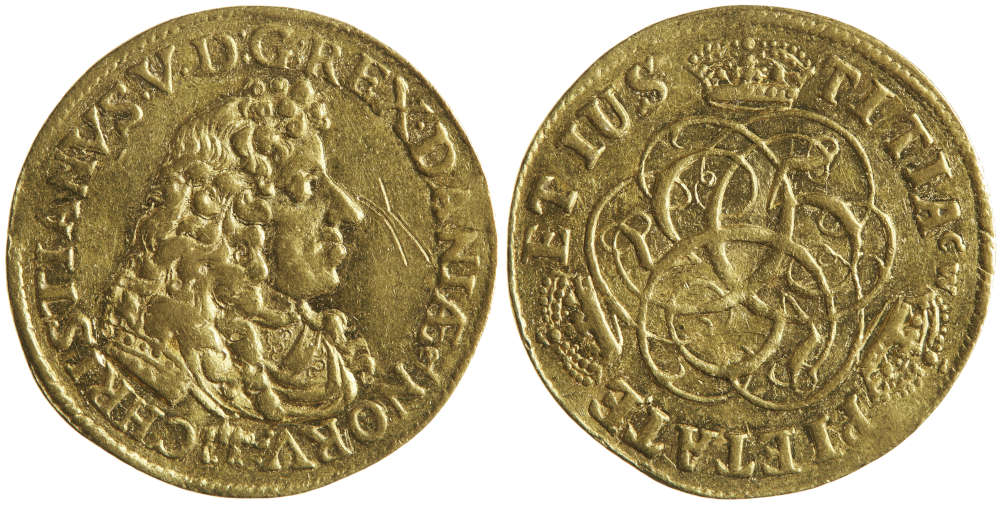
Ducat, minted in Copenhagen, probably in 1690, under the rule of Christian V. Photo: National Museum of Denmark.
All gold coins are unique in the sense that just one specimen of the respective type exists. This means that there might be other coins with the same face value from the same year, but they were minted with other dies. Or there might be coins minted with the same dies that have a different face value.

Triple speciesdaler, minted in Christiania (Norway) in 1668 under Frederik III. Photo: National Museum of Denmark.
The silver coin – the triple Norwegian speciesdaler – was considered to be unique in the past. But another specimen appeared in the market in the 1970s, which is today part of a private collection.
Right of First Refusal for Selected Coins
The Bruun Collection has served as a reserve for the Royal Danish Coin and Medal Collection in the National Museum for 100 years. If the Royal Collection had been destroyed by fire or lost by theft, the Bruun Collection would have been donated to the National Museum. Since this did not happen, the collection will now be offered at auction following the instructions of Bruun’s will.
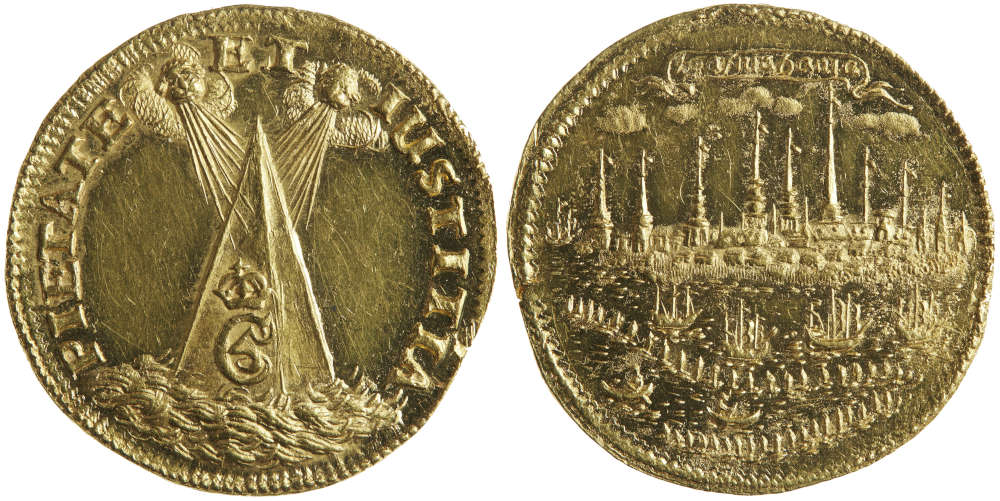
Double ducat, minted in Copenhagen between 1670 and 1699 under the rule of Christian V. Photo: National Museum of Denmark.
In fact, Bruun’s coin collection consists of several collections, and the National Museum has the right of first refusal regarding a series of coins from one of these collections. These are the coins that Lars Emir Bruun purchased in 1922, one year before he died, from the Danish Count Preben Bille-Brahe. At the time, the Count’s collection was considered “the most important collection of Danish and Norwegian coins”.
The purchase agreement stipulates that Bruun grants the right of first refusal to the Royal Danish Coin and Medal Collection regarding coin types from the Bille Brahe Collection that are not yet part of the National Museum’s collection. This is why the National Museum acquired precisely these seven coins from the collection.
Currently there are no plans regarding the exhibition of the newly purchased coins.
The Coin Collection of the National Museum
The Royal Danish Coin and Medal Collection in the National Museum is Denmark’s leading collection of money, medals and other objects relating to payment from all over the world. The collection was set up in 1780 when it was decided to move the coin and medal collection of the Royal art chamber into the newly installed rooms at Rosenburg Castle. When the constitution came into force in 1849, the collection became public property and was transferred to the Prince’s Mansion in 1867, where it became part of the National Museum in 1892. Today, the collection contains more than 700,000 objects, including almost 300,000 Danish coins and medals.







